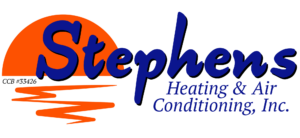What is a MERV rating on a filter!? … and why it matters.
What exactly IS the MERV Rating on Furnace Filters?
If you’ve ever shopped for a furnace air filter, you’ve likely come across the term MERV rating. But what does it mean? MERV stands for Minimum Efficiency Reporting Value, a standardized measurement developed by ASHRAE to rate how effectively an air filter captures particles of different sizes. Yes, someone actually did this research for us! Let’s break it down:
MERV ratings range from 1 to 20. The higher the number, the better the filter is at trapping small particles like pollen, pet dander, mold spores, and even bacteria and viruses.
MERV Filter Rating Chart: What Each Level Filters
Here’s a simplified breakdown of MERV filter ratings and their typical applications:
| MERV Rating | Filtration Level | Captures |
| MERV 1–4 | Basic | Large dust, carpet fibers |
| MERV 5–8 | Standard home use | Dust mites, pollen, mold spores |
| MERV 9–12 | High-efficiency home use | Pet dander, auto emissions, fine dust |
| MERV 13–16 | Hospital-grade | Smoke, bacteria, virus carriers |
| MERV 17–20 | HEPA/cleanrooms | Microscopic allergens, viruses |
Why Higher MERV Ratings Aren’t Always Better
I know, if higher filters more, why shouldn’t I buy the highest rating I can find? While high-MERV filters offer better air quality, they can also create higher static pressure in your HVAC system—especially if your system wasn’t designed to handle them.
⚠️ Static pressure refers to the resistance to airflow in your ductwork and HVAC system. As the MERV rating increases, the filter becomes denser, which restricts airflow. Imagine trying to breath through mesh, then switch to an N95 mask fitted properly. We all know how much more effort that takes! It also causes your blower motor stress while it tries to pull air through a MERV 17 filter. For your heating system, this can lead to several problems:
- Reduced airflow to vents
- Overworked blower motor with a shorter life span
- Decreased energy efficiency (More work, more power, more $)
- Uneven heating and cooling
- Long-term wear or damage to your HVAC system
High MERV filters (13 and above) can cause airflow issues unless your HVAC system is specifically designed to accommodate them. This is especially true in older systems or systems with undersized ductwork.
✅ How to Choose the Right MERV Rating for Your Home
More information just makes the choice harder, we know. Here’s a quick, easy guide based on your needs:
- MERV 6–8: Great for general use. Balances air quality and system efficiency.
- MERV 9–12: Ideal for homes with pets, allergy sufferers, or urban air pollution.
- MERV 13: Offers excellent air filtration, but check with your HVAC contractor before installing.
- MERV 14+: Not recommended unless your system is designed for high-resistance filters.
🔁 Change Your Filter Regularly for Best Performance
Regardless of MERV rating, a dirty air filter restricts airflow more than any clean filter ever will. We have said it before, and we’ll say it again: Replace your air filter every 30 to 90 days, depending on usage, pets, and allergy sensitivity.
🏠 Choosing the right MERV-rated air filter can improve your indoor air quality, reduce allergens, and protect your health. But going too high without considering your HVAC system’s limits can cause reduced airflow, high static pressure, and expensive repairs. If you prefer higher filtration or air cleaning options, we can help you with several options to supplement your air filter as well.
When in doubt, call us and we can guide you in determining the best options for your system. A well-balanced choice ensures clean air and optimal performance year-round.



